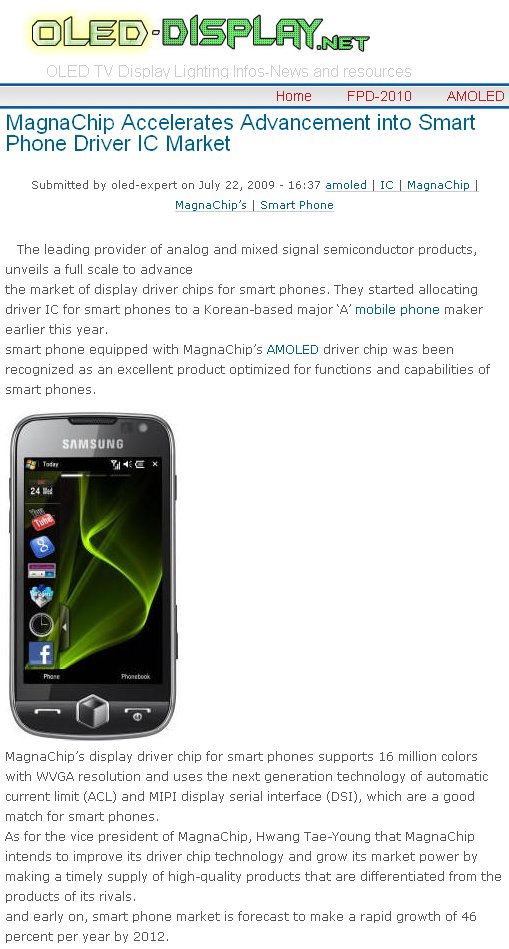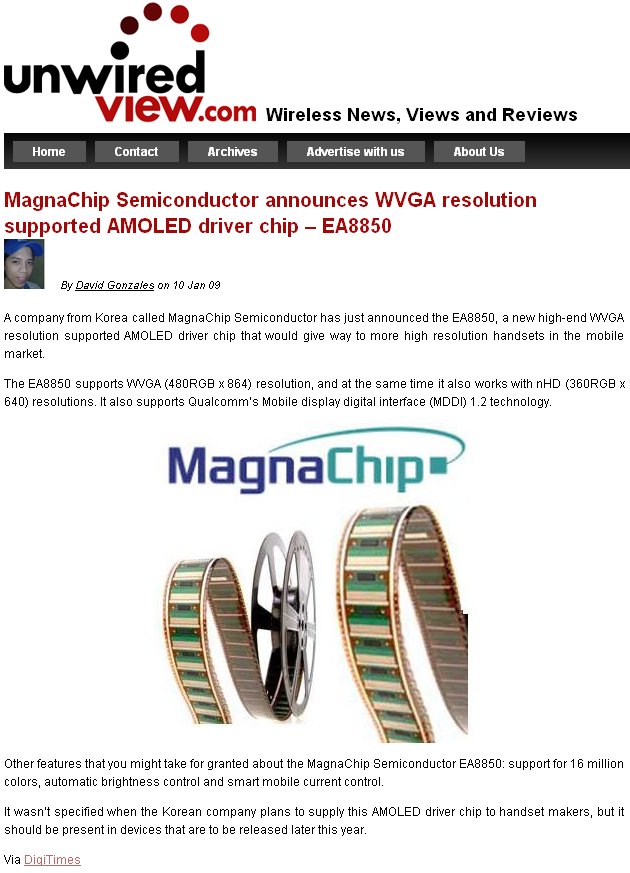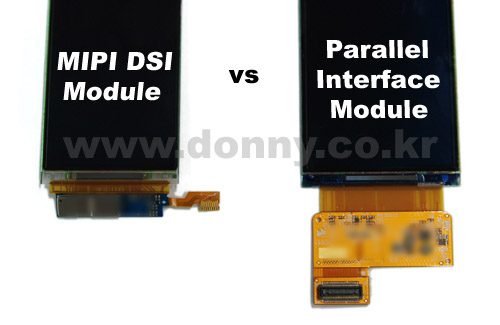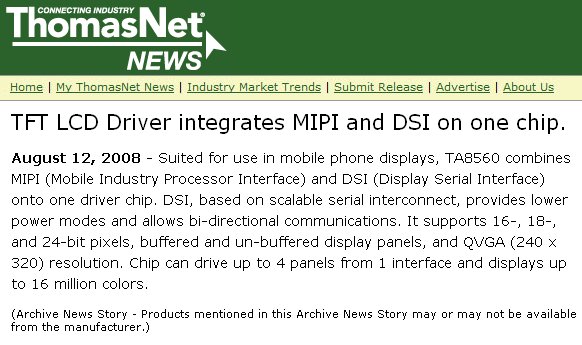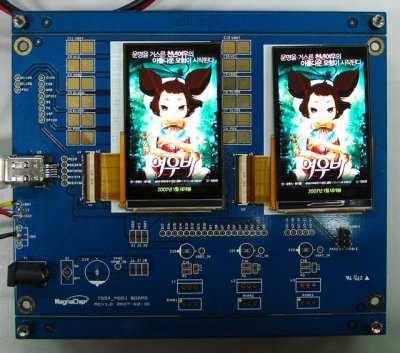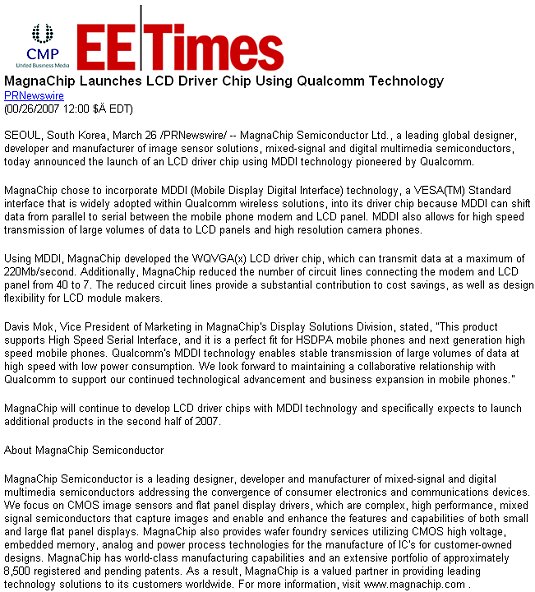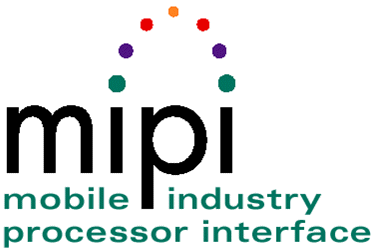MagnaChip Accelerates Advancement into Smart Phone Driver IC Market
The leading provider of analog and mixed signal semiconductor products, unveils a full scale to advance
the market of display driver chips for smart phones. They started allocating driver IC for smart phones to a Korean-based major ‘A’ mobile phone maker earlier this year.
smart phone equipped with MagnaChip’s AMOLED driver chip was been recognized as an excellent product optimized for functions and capabilities of smart phones.
MagnaChip’s display driver chip for smart phones supports 16 million colors with WVGA resolution and uses the next generation technology of automatic current limit (ACL) and MIPI display serial interface (DSI), which are a good match for smart phones.
As for the vice president of MagnaChip, Hwang Tae-Young that MagnaChip intends to improve its driver chip technology and grow its market power by making a timely supply of high-quality products that are differentiated from the products of its rivals.
and early on, smart phone market is forecast to make a rapid growth of 46 percent per year by 2012.
http://www.oled-display.net/magnachip-accelerates-advancement-into-smart-phone-driver-ic-market
